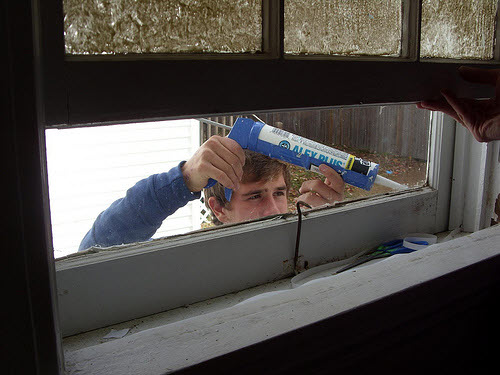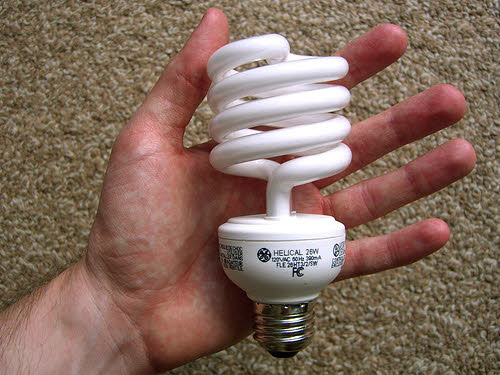By Jay Harris
Most consumers are already well-versed in “the little light bulb that could.” Compact fluorescent bulbs (CFLs) have come a long way in the last decade, gaining acceptance and even mandatory usage legislation in some states for construction projects and government buildings.
The curlicue bulbs use a quarter of the electricity of their traditional incandescent cousins, so their popularity is understandable. Despite their higher price point — about three times that of an incandescent — the CFLs last ten times longer, paying for the added “investment” in about six months.
Many people that make the switch are then inspired to do even more, especially when they realize that a few small changes can cut monthly power bills by a third or more.
When I’m approached on the floor by customers about CFL bulbs (or any product that helps them save electricity), I try to engage them in conversation about other measures they could take to reduce their power bill. Fortunately for them, some of the most effective changes don’t involve replacing all of your windows or re-insulating an entire house. If you’re on a budget, that’s even more reason to take action today to start saving money each month. Here are four places I recommend you start:
1. Wrap Your Water Heater in an Insulating Blanket
Cost: $30
Heating water accounts for as much as 25 percent of energy used in the home, so increasing your water heater’s efficiency is a no-brainer.
First, check that your hot water heater is set to 120°F. Keeping it hotter than that will cost you money and scald your hands when you turn on your shower.
Secondly, check that your heater is wrapped in an insulating blanket. If it’s not, you’re literally throwing money away each day that can be forever saved for about the cost of a family dinner.
When you wrap a blanket around yourself in the winter, you retain heat and stay warmer. Likewise, not insulating your water heater just forces it to use more electricity and strain to work harder. I typically recommend an inexpensive blanket (about $30) made from 100 percent recycled denim and high performance foil. They’re easy to self-install and the savings begin immediately.
2. Install Motion Detecting Light Sensors
Cost: $20 per room
If you’ve ever replaced a light switch, you can probably manage the simple installation of a motion sensor in your home. Even if you opt for professional installation, the process is quick, easy and cheap. Motion detectors have dropped dramatically in price in recent years, with 500-watt models (with 180 degree sensitivity) starting as low as $20.
If you’re a parent, chances are that you’ve experienced the frustration of children who forget to turn lights off when they leave the room. With a motion sensor light that turns on when they enter and off when they exit, that parental hassling is a thing of the past.
3. Go On a Leak Hunt
Cost: $40
A most effective way you can save energy in your home is to eliminate leaks that push your heating and cooling system harder than necessary. Growing up, did anyone ever say to you: “We’re not paying to air condition the back yard!” when you’d forget to close a door? In many cases, we are paying, thanks to leaky windows and door jams.
To check your house for leaks, start by checking doors and windows to see if daylight shines through or if they’re loose — if they rattle, they may have a leak. One good test you might want to try is to close all doors and windows, turn on exhaust fans in the kitchen and the bathroom, and light a stick of incense. Carry it around your house to doors and windows and watch if the smoke is sucked out through cracks.
Another alternative is to contact your local gas company. Some will offer you great deals on air leakage inspections. A certified inspector will come to the house and depressurize the home, making a more efficient and easy way of finding any leaks around the house.
Weather stripping and caulk can go a long way to eliminate these leaks, and they’re simple fixes you can do on your own. Oftentimes, the biggest culprit is an attic hatch. Check yours to make sure it’s insulated on the inside and that it closes snuggly. If not, a bit of recycled denim insulation inside of the hatch and weather stripping on the door’s edges can help secure the fit. While you’re in the attic, use caulk to seal any leaks to the outdoors around pipes and ductwork.
It’s possible to cut your energy bill by a third just through sealing up leaks and eliminating drafts. Don’t wait to get started!
4. Install a Programmable Thermostat
Cost: $50
Considering that a programmable thermostat can literally save you thousands upon thousands of dollars over the life of your home, not using one is plain foolish. You may even already have one that you’ve simply never learned to use. Ranging in cost from $20 into the hundreds, the models at and under $50 often will fit your needs. Most models in this range allow you to set time periods for the temperature to adjust itself, allowing you the flexibility not to cool your home while you’re away at work during the day in August (but have the A/C kick in half an hour before you arrive home, so that you’re comfortable from the minute you walk in the door).
Cooling or heating an empty house to extremes is wasteful, and it’s one of the simplest and least inexpensive major changes you can make to increase your home energy efficiency. The technology is there — take advantage of it!
These tips are just a handful of the changes it’s possible to make for just a small investment. What other energy saving remedies have you found for your house that didn’t break the bank but saved you a bundle?
Jay Harris is a Home Depot sales associate and a regular contributor to Home Depot’s blog. His energy-saving interests at Home Depot range from solar power to CFL bulbs.
Image credits: armisteadbooker via photo pin cc; Chewonki Semester School via photo pin cc



Amanda
Please change your bulbs out to these. I did after they came out and saw a drop in my electric bill on the first bill.I haven’t had to change out bulbs except one since I bought the package deal.
Jay Harris
Glad to hear the bulbs are working out for you! It’s amazing what a difference something as small as a bulb can make in your house. Thanks for the feedback.
– Jay
Home Insulation
Any insulation measure is helpful, even one as small as insulating a water tank. Extend this to any pipes that you can reach as well. This goes especially if you have loft insulation, because the loft gets cooler as a result and any pipes that run through it will suffer as a result.
Jay Harris
Great input! Just like with how even a small bulb can make a difference, even just a single pipe or tank can make such a difference; it’s almost silly not to take the time for it. Thanks for the comment!
– Jay